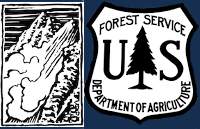Good morning. This is Doug Chabot with the Gallatin National Forest Avalanche Advisory issued on Tuesday, March 3, at 7:30 a.m. This advisory is dedicated to Ben Richards, a young skier who was killed in an avalanche on Yellow Mountain near Big Sky on this day in 2007. This advisory does not apply to operating ski areas.
It was quite novel shoveling my walk this morning, only if it was just an inch of snow. The mountains fared better with almost two inches falling and three inches reported around West Yellowstone. Currently, mountain temperatures are a few degrees below 0F with light winds out of the north to northeast. Snow flurries will stop this morning and skies will become partly cloudy with temperatures rising into the teens and winds remaining northerly and light. Before the storm ends an inch more could fall around West Yellowstone and Cooke City, but then high pressure builds and chances for snow are zilch through the weekend. A couple inches never felt so deep.
Bridger Range Madison Range Gallatin Range Lionhead Area near West Yellowstone Cooke City
Last night ahead of the storm, temperatures dropped and the wind direction shifted from west to north as speeds increased to 20 mph. Freshly formed wind slabs will be touchy today. In the two days leading up to the storm there were small avalanches triggered around Cooke City (photo) and yesterday morning the Big Sky Ski Patrol found a small avalanche, 6-10 inches deep, on an unusual wind-loaded terrain feature. Another small wind slab, about 30 feet wide, was seen on the west side of Saddle Peak yesterday. Today, the new low-density snow will be unstable if it’s been moved around by the wind.
Yesterday we received a report of surface hoar below treeline on all aspects around Cooke City. This weak layer is now buried and could pose problems, especially if it snows more or if wind drifting buries it deeper. Shooting cracks or collapsing (whumphing) are signs that it’s unstable and ready to slide. I recommend looking for it in other ranges too, like Lionhead and the southern Madison’s which can be surface hoar factories.
The avalanche concern is confined to the new snow. Deeper layers in the snowpack are generally stable and I do not expect avalanches to break down into them (video). Loose snow slides are possible on steep terrain given the underlying hard surface and slopes with a wind-load may have soft slabs up to foot deep that could be triggered. For today, the avalanche danger is rated MODERATE on all wind-loaded slopes and LOW everywhere else.
The Snow Science Program at MSU needs your Help!
They are looking for backcountry skiers and sledders to help them with a study on Human Factors. Watch this 2:46 minute video for details.
Forum on Snow Science and the Human Factor on video.
In case you missed it, here's the entire 1:13 hour video from the forum on Snow Science and the Human Factor at MSU. John Stifter, editor of Powder Magazine, talks about his own personal experience with the avalanche that killed three of his friends in 2012 at Tunnel Creek. Doug Chabot gives a presentation about Sidecountry Skiing and Digging Pits starting 44 minutes into the program.
I will issue the next advisory tomorrow morning at 7:30 a.m. If you have any snowpack or avalanche observations drop us a line at mtavalanche@gmail.com or call us at 587-6984.
AVALANCHE EDUCATION and EVENTS
Take a look at our Education Calendar for all classes being offered.
1-hour Avalanche Awareness, Bozeman, REI, 6:30 - 8 p.m., Wednesday, March 11.
